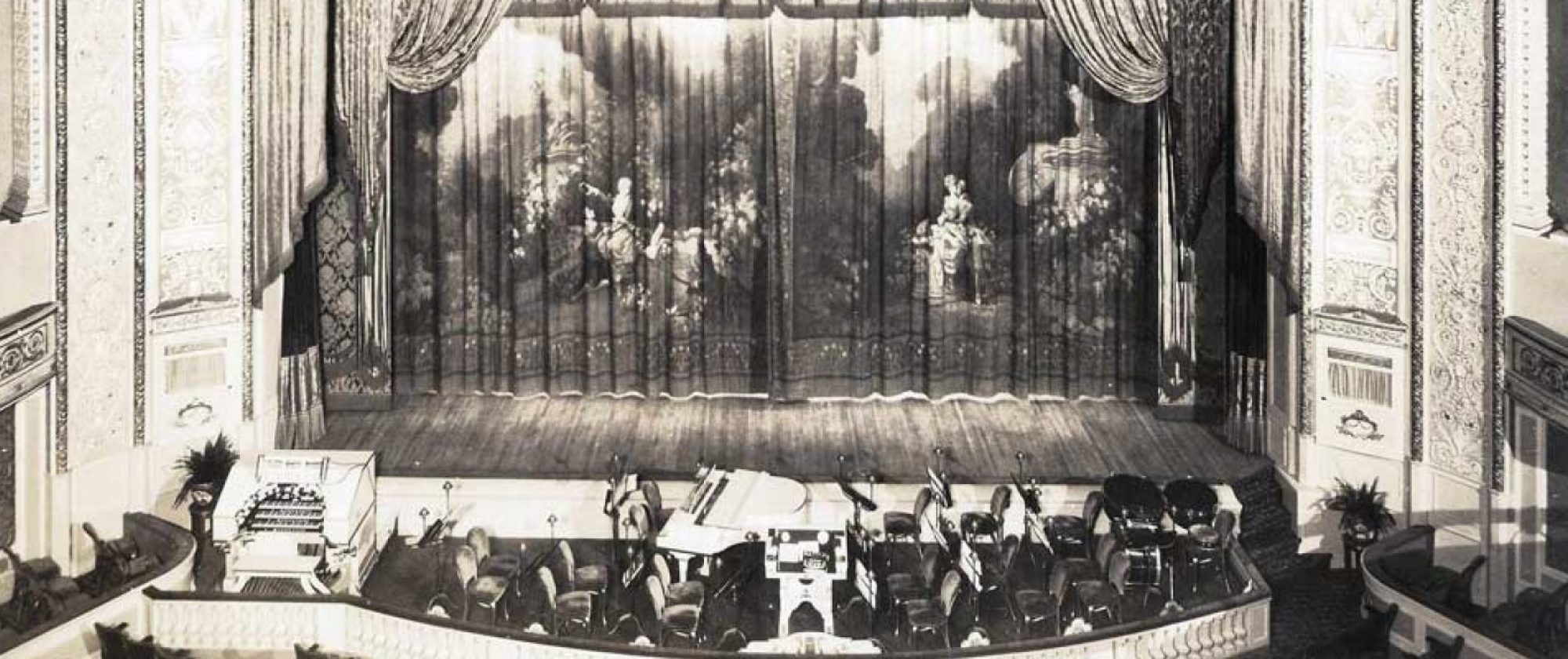Miss Gibson, coming very early on the bill found the house a bit chilly to start with, but she soon had them. Her blues song numbers seemed to find the crowd right where they lived and kept them busy asking for more. Miss Gibson has an exceptionally pleasing personality, a natural “coon shouting” voice, and the ability to use it to very good advantage.
Margaret Young, next to closing the first half, chalked up one of the hits of the show with her song routine. Her chorus girl number is right with the customers and following her own inimitable rendition of “Oh, by Jingo,” she had them begging for more. “By Jingo” it was, but she was compelled to respond with two more extra innings, doing “Where is My Sweetie Blues?” and “Bimbo on Bamboo Isle.” That probably exhausted her routine, else she would be up there yet. Miss Young is a ‘warm’ sort of miss with a harmless way of putting over a naughty lyric is undeniable.
Burt Gordon and Gene Ford ruined the show down next to closing. Every time Gordon looked at the audience they yelled. He has a nonchalant, quiet delivery that is the essence of form – and what a partner! Miss Ford is one of the best women straights in vaudeville and is also possessed of a mellifluous soprano voice. A double at the finish with both harmonizing was a high light of the evening.
Octavo was a hit. She opens singing a song off stage in a man’s voice, switching, after her appearance, to a soprano. Octavo sings equally well in both low and high voice and garners applause easily and freely.
Florence Rayfield drew the No. 2 spot and accredited herself nobly. Miss Rayfield is very young and dainty, has a little voice, but handles it powerfully and sells her material in a sure-fire manner.
Piantadoni and Walton had a wonderful time with that intimate audience, putting it in their pockets without a struggle. Walton’s pipes sounded like an organ in the cozy confines, and his song methods stood emphasized the chummy proportions. Piantadoni was all but cheered when his old hits rolled off under his fingers one by one.
Lou Miller and Alice Bradford did very well on second, about running second on applause scoring. A portion of the song routine has been changed, and to advantage. They encored with melody stunts showing the genesis of popular melodies, similar to the idea shown by Eddie and Lou Miller as a team, though the routine changed.
[New Act] Songs, 6 mins; one. Irene Francis, a lusty brunet, displayed a strong voice from wings warbling a snatch of a ballad before entrance. Her routine is a straight singing one. She opened with “Peggy” with “Buddy” following, the climax of the number affording her a chance for a high register finish. That got something. She closed with “Someone is Waiting” and could have encored, but appeared content with her trio of songs. For number two on the three-a-day she serves well for Miss Frances has a voice well suited for ballads.
The Beatrice Morrell Sextet was the headline tune, coming in the usual number five spot (closing intermission). Miss Morrell’s flash singing turn made an excellent showing, considering the trappings which were carried up from downstairs. The harpist in the turn seemed to have trouble with her instrument and in adjusting one of the strings aroused a squeaky key during one of the duets. Otherwise the turn ran off smoothly, the vocalizing of the quartet registering the main impression.
Franklin Wilson, stereopticon poses opened the bill. There seems to be no good reason why the black support shoved through the drop for her to stand on should not also be enameled white so as to merge with the colored lights, which in this case came from the gallery spot light worker, instead of from a lantern man stationed near the musician’s leader. Some of the color-effects are excellent, and Miss Wilson has the beauty and the figure to put the turn over.
